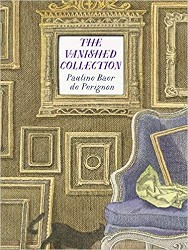The Nazis’ destruction of human life was decidedly worse than their attacks on material culture. However, their plan to commit genocide against the Jewish people did involve the theft of all products of Jewish civilization. In Violin of Hope, when a music-loving Jewish family is arrested by Nazi soldiers on the eve of the Sabbath, their captors seize their beloved violin and eventually toss it into a heap of other objects in a damp cellar. Author Ella Schwartz and illustrator Juliana Oakley draw parallels between the fate of the musical instrument and victims of the Holocaust themselves.
Schwartz uses metaphor to develop the violin’s character. Before the terror begins, the instrument’s “quick and lively” songs bring joy to young Itzik and Feiga, who dance as their father plays. But “slow and sorrowful” songs foreshadow the suffering to come. Captured by the stormtroopers, who grab its “beautiful scrolled neck” and break a string, the violin is brought to a freezing basement prison where its wooden “belly” cracks. Schwartz and Oakley demonstrate the total destruction of Jewish life without equating the violin’s torments to those inflicted on people. Oakley’s illustration of relics imprisoned in a dark room looks like a shadowy grave of the victims’ former lives. Then, a door opens, letting in light and the possibility of hope.
In her author’s note, Schwartz explains that the book was inspired by the project Violins of Hope, created by luthiers Amnon (1939 – 2024) and Avshalom Weinstein. This father and son have dedicated themselves to repairing violins that were owned by Jews before the Holocaust. These instruments then become part of an orchestra that performs all around the world. Images in the book show a luthier carefully examining and repairing the once-lost violin. An array of tools hangs on the wall, along with the finished products of his artistry. These battered instruments resume their lives, their injuries healed and their wood now shining.
The final step in bringing the violin to life occurs when a boy named Isaac and his father enter the shop. Encouraged to practice and persist, Isaac grows up to perform Jewish music, putting an end to the silence forced on a people and their music.
Emily Schneider writes about literature, feminism, and culture for Tablet, The Forward, The Horn Book, and other publications, and writes about children’s books on her blog. She has a Ph.D. in Romance Languages and Literatures.





